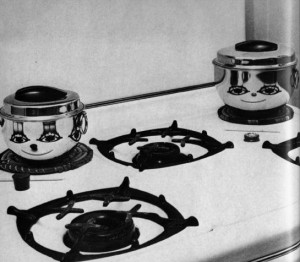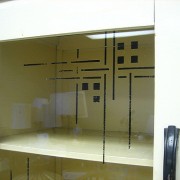Glass paint in the kitchen
Tempered glass and glass paint
You don’t have to spend a lot of time in the kitchen to realize that cooking can generate a lot of heat and humidity. Heat and humidity are both very hard on paint – especially water-based paints that are commonly used in homes. Oil-based paints are more durable, but they generate a lot of unpleasant odors as they cure. In addition, the kitchen – including the walls – must be cleaned frequently. Countertops, backsplashes and walls all suffer from being part of the food preparation environment. Any surface you include in the kitchen must be tough enough to stand up to heat, humidity and regular cleaning.
Glass is a go-to surface. Europeans have used glass surfaces in their kitchens for years, and it’s easy to see why. It’s impervious to bacteria, easy to clean and can be sanitized infinitely without damage. It doesn’t fade or wear the way other surfaces do. But it’s not indestructible!
You may have noticed that glass isn’t exactly flexible. Its rigid structure is vulnerable to rapid changes in temperature. Ovens and cooking surfaces can generate temperatures 6-10 times greater than ambient air temperature within a few minutes. That puts glass surfaces in danger of damage from expansion. If the glass molecules heat up, they’ll expand and crack the surface of a glass object.
Fortunately, tempered glass is designed to withstand rapid changes in temperature. If you intend to use glass surfaces in your kitchen, you’ll want to choose tempered glass. Not only will it protect your glass surfaces from temperature-related damage, it’s also better able to withstand impacts from dropped items.
Glassprimer&153; glass paint is specially formulated to bond to all types of glass, including tempered glass. You can add backpainted glass safely to your kitchen, knowing that it will not chip, fade, peel, bubble or crack, even in the high humidity and elevated temperatures in a kitchen. Glassprimer&153; forms a permanent bond with the surface of the glass, so your kitchen surfaces will look great for years!
You can use a combination of tempered and non-tempered glass when decorating the kitchen. Non-tempered glass is lightweight, and works well on cabinet fronts and backsplashes where heat and impacts are not a concern. Because of the way tempered glass is made, it can’t be cut. If you need to cut into the glass to make electrical outlets and switches accessible, use non-tempered glass or consult with a glass shop about your options. If an electrical outlet is directly accessible from the stove, you’ll want to consult with an electrician to move it prior to starting your glass project.
If you’d like more information about working with glass paint, please check out the rest of our site! If you’d like to order glass paint, please visit our online store.
Photo Credit: Laser Burners, via Flickr.com










